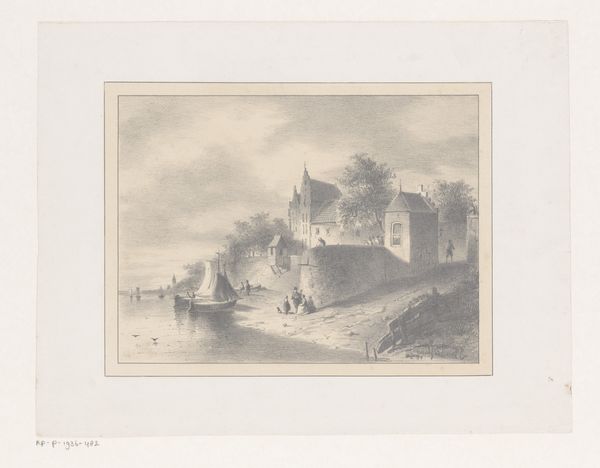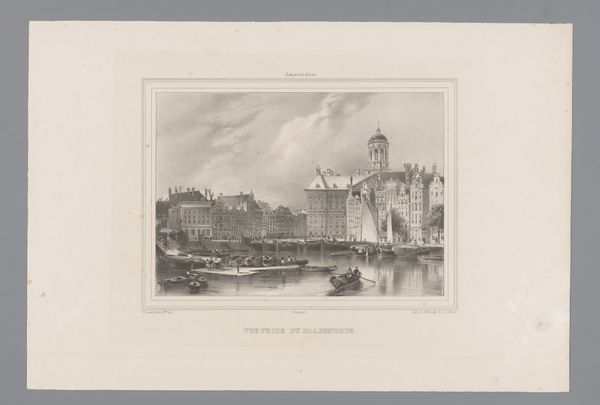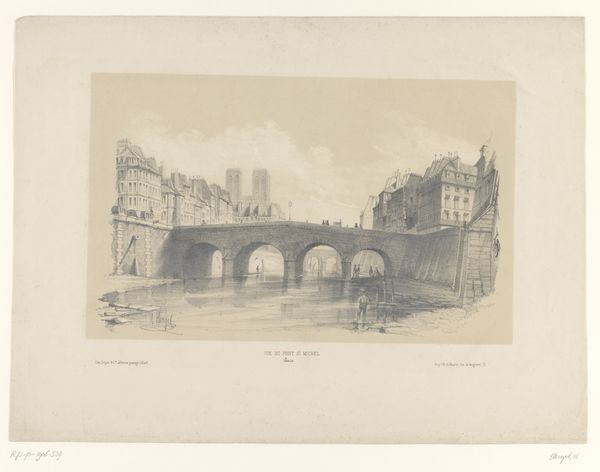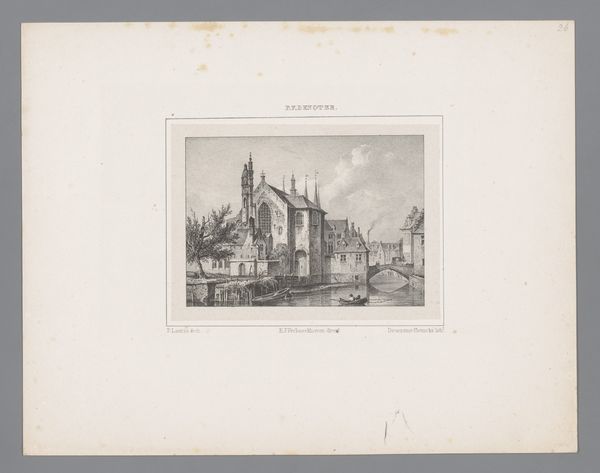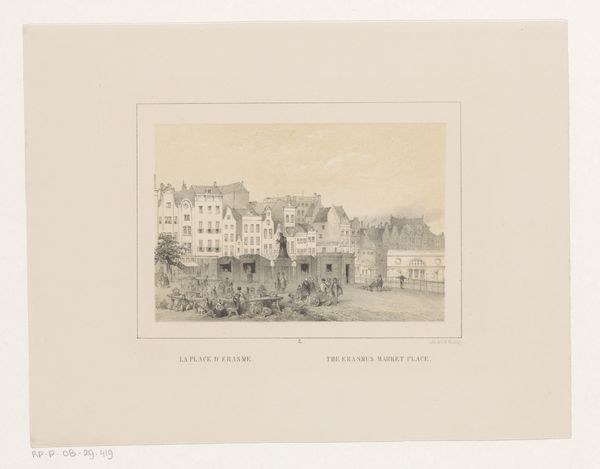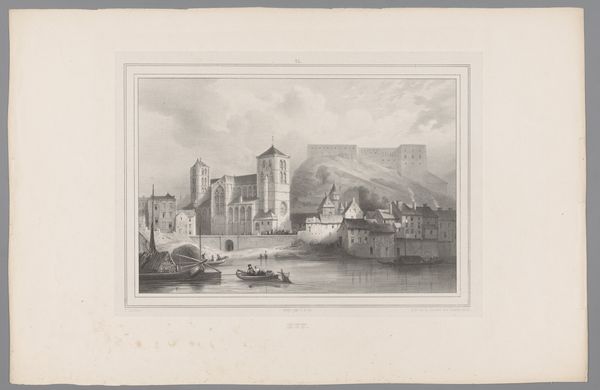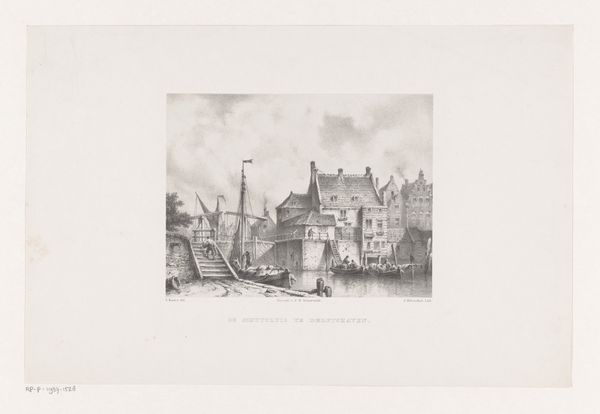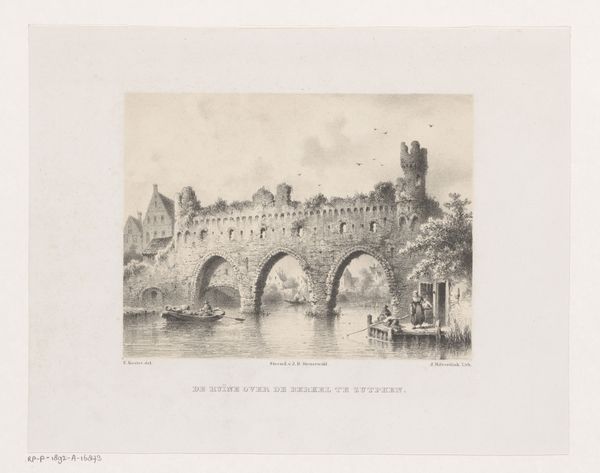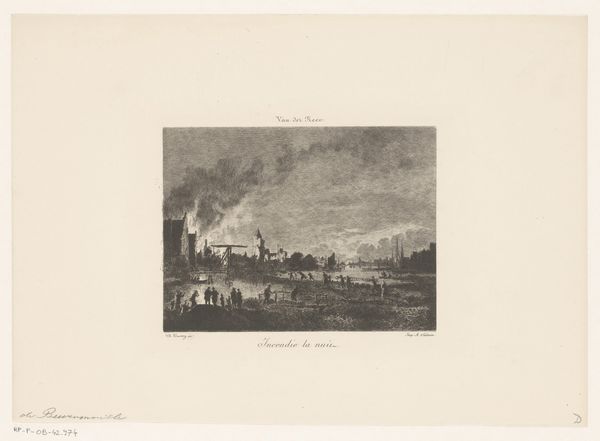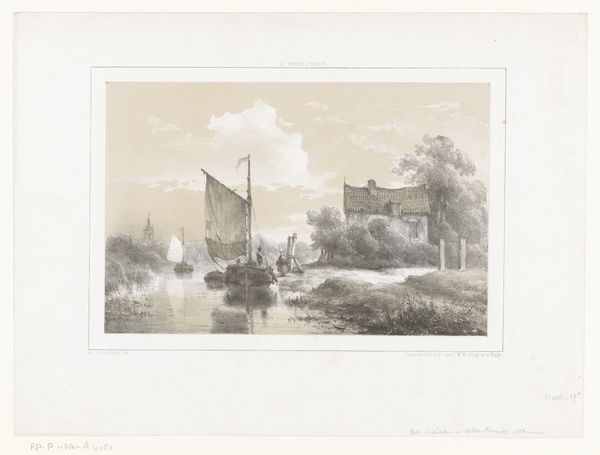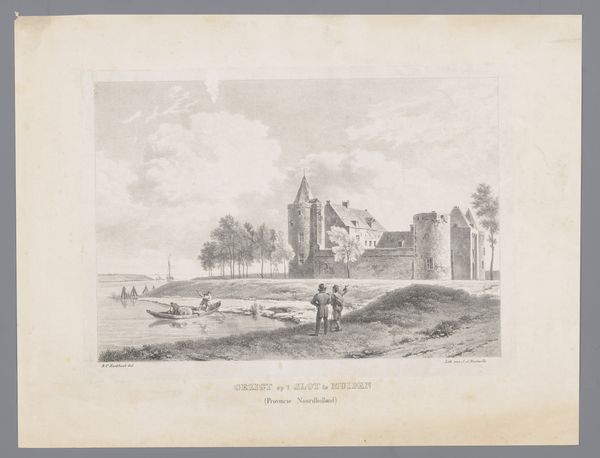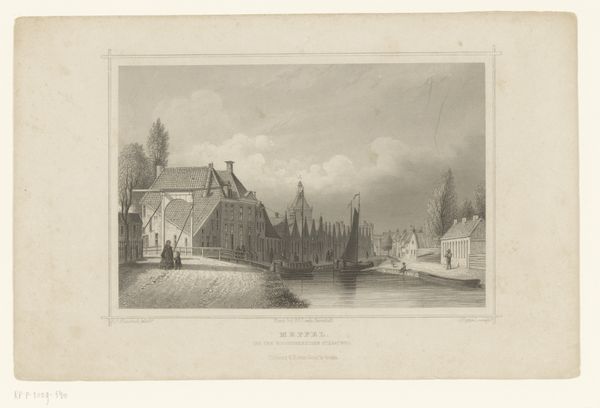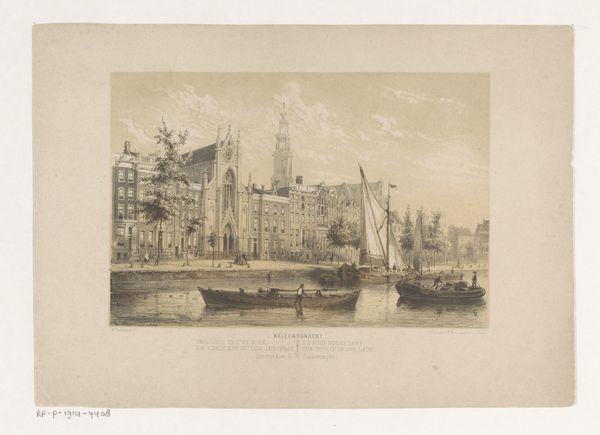
print, etching, engraving
# print
#
etching
#
romanticism
#
cityscape
#
academic-art
#
engraving
#
realism
Dimensions: height 246 mm, width 320 mm
Copyright: Rijks Museum: Open Domain
Editor: This is "Gezicht op Grote of Sint-Laurenskerk te Rotterdam," made sometime between 1839 and 1844 by Charles Rochussen. It’s an etching and engraving, giving it this really detailed, almost photographic quality. It shows the cathedral reflected in the water. I'm struck by the detail – how does it all come together to create this cityscape? Curator: Well, let's consider the material process first. Etching and engraving are painstaking, labor-intensive techniques. Each line is deliberately etched or engraved onto the plate, demanding precision. This print, existing in multiple copies, was made accessible for wider distribution and consumption. How does the choice of medium contribute to its meaning? Editor: I see what you mean. The meticulous work elevates a common view into something 'artistic' for more people. The printing makes the depiction more democratic, a product for the masses. Curator: Exactly. This "Realist" or "Romantic" approach, achieved through a reproducible medium, presents a particular view of urban life in the 19th century. Rotterdam, with its imposing church, becomes a commodity to be consumed by a growing middle class. Editor: So, you're saying that the print is not just about the aesthetic, but the means of production shaped the artwork's value in society? It democratized the art, as more prints could be created and distributed than if Rochussen made oil paintings. Curator: Precisely! The etching's accessibility allowed the artist and the publishing house to reach a broader market, to engage them with ideals of Romanticism within their very homes. And this very print in the museum today holds new significance. We’re thinking about its life from production in the 1840s to its location today in a contemporary collection, both accessible to be re-imagined in today's socio-cultural context. Editor: That really changes how I see it. It’s not just a pretty picture, but also evidence of 19th-century artistic labor and expanding audiences. I'll have to rethink my appreciation of prints now. Curator: And I must consider the evolving consumption practices from the nineteenth century to the accessibility we strive for in digital collections today!
Comments
No comments
Be the first to comment and join the conversation on the ultimate creative platform.
